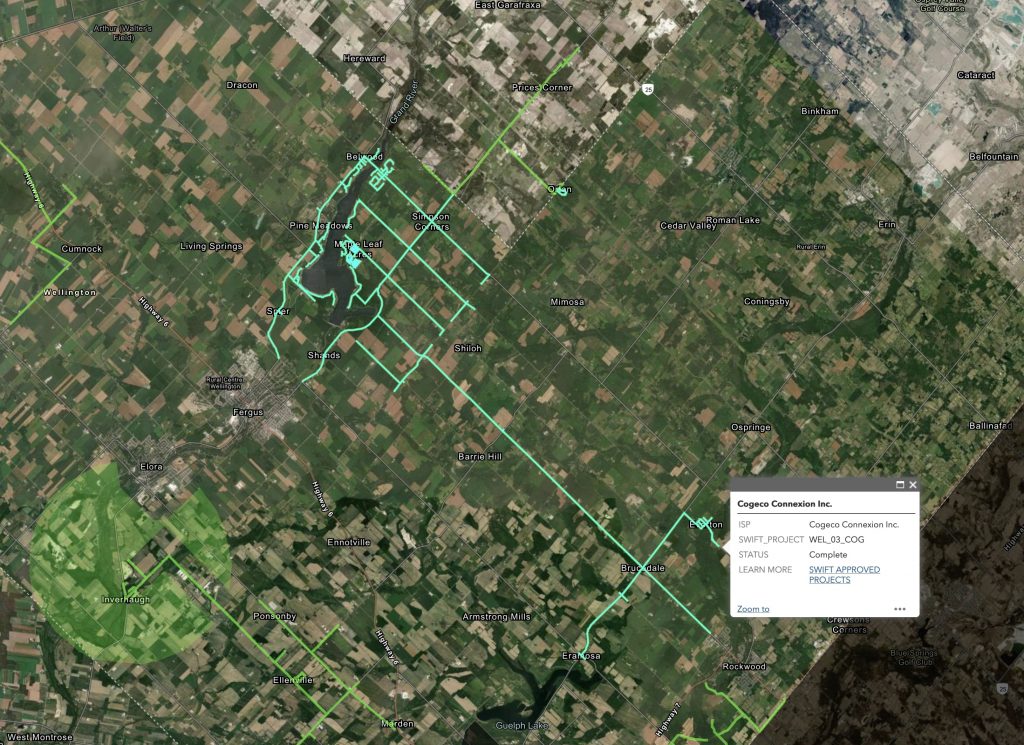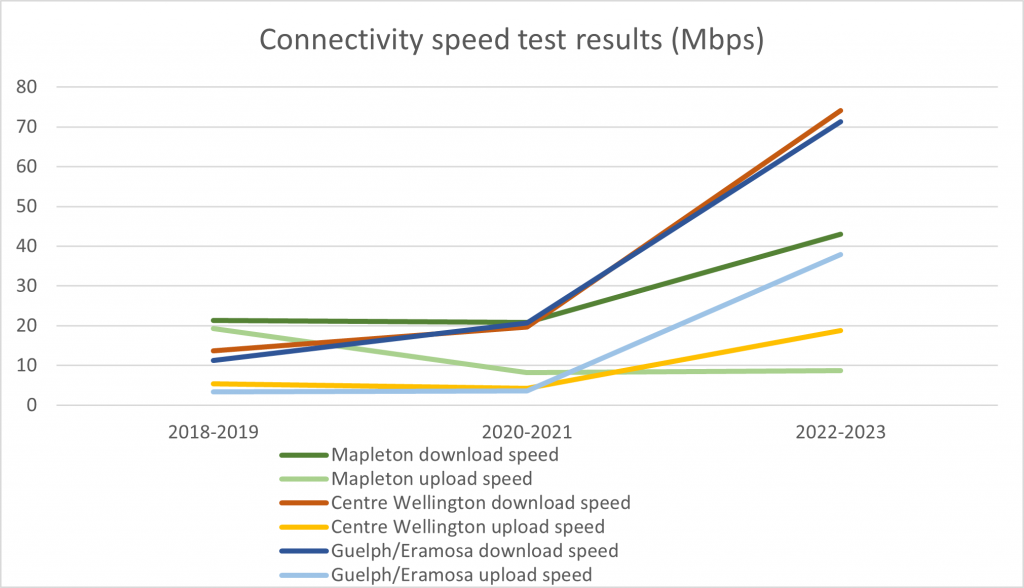WELLINGTON COUNTY – The last of four broadband improvement projects cost-shared between telecom service providers and taxpayer dollars has at last been completed.
The installation of 103km of fibre-optic cable by Cogeco makes highspeed internet connectivity available to more than 1,700 residences and businesses in 11 communities largely concentrated around Belwood Lake, and spanning between Fergus and Craigsholme at the Wellington-Dufferin border.
Funded in part through the Southwestern Integrated Fibre Technology (SWIFT) initiative, taxpayers contributed $4.40 million through SWIFT toward the total $7.27-million project, with Cogeco covering the remaining $2.87 million.
SWIFT essentially provides funding in a centralized way to entice service expansion through public-private partnerships.
The non-profit was started by the Western Ontario Wardens’ Caucus to select broadband infrastructure projects and award federal, provincial and municipal dollars to help fund them.
The final county project well overshot a targeted completion date for the end of 2021, with work completed in Nov. 2023, and finally announced in a May 9 SWIFT press release.
SWIFT communications manager Melissa O’Brien wrote in an email that “349 premises were impacted by easement requirements” with the Grand River Conservation Authority (GRCA).
O’Brien added there were locate delays and a change to bury fibre optic cables rather than run them above-ground in some sections, requiring more permits to be acquired.
Cogeco VP of operations Matt Wickahm said the company “connected several homes and cottages within the Belwood Lake Conservation Area” with the help of the GRCA (which operates most of the area surrounding the lake).

The blue lines on a SWIFT map illustrate the route of highspeed fibre optic cable installed by Cogeco. Screenshot
Federal infrastructure minister Sean Fraser said the project’s completion means more country residents and businesses can connect to “essential services and enjoy the additional opportunities that come with highspeed internet.”
Provincial rural affairs minister Lisa Thompson said the fibre-optic cable strengthens rural communities, and will help connect people.
The first local project began in 2020, with connections established around Eden Mills in Guelph/Eramosa in 2021.
Three internet service providers – North Frontenac Telephone Company, EH!tel, and Cogeco – were collectively awarded $8 million for four projects installing 197 road-kilometres of fibre optic cable with the potential to service 3,079 county properties with high-speed internet.
One of the projects, around Inverhaugh southwest of Elora, also included a wireless component.
The total value of all four projects is pegged by SWIFT at $13 million.
County Warden Andy Lennox said the county “is proud” to have contributed to the projects.
“When the County of Wellington signed on to be a member of the SWIFT project in 2016, we knew improved connectivity was important,” the warden said, adding its importance “became incredibly clear” during the pandemic.
In 2016, the Canadian Radio and Television Commission (CRTC) established target speeds of at least 50 megabits per second (Mbps) download and 10 Mbps upload for all Canadians by 2030.
However, anonymous speed testing data collected by the Canadian Internet Registration Authority through a webpage customized for the county suggests average speeds here are below the CRTC target, in some cases by a wide margin.
As of May 13, 12,566 speed test results suggest internet users are experiencing an average of 37 Mbps across the county’s seven municipalities.
When it comes to the areas now serviced by Cogeco fibre, the average download speed is 27 Mbps, according to a sampling of 75 speed records captured over the past six years.
Cogeco said expected speeds can now reach up to 1 Gbps.
County Smart Cities program manager Justine Dainard said it’s too soon to gauge fibre’s affects on speeds in the area, and encourages users to run speed tests by visiting the county's website.
Dainard also encourages residents across the county to continue testing speeds even when they’re fast, so collected data isn’t skewed by poor speeds.
“We’ve seen an overall improvement,” Dainard said, adding speeds have increased 300 per cent since the SWIFT buildouts.

County of Wellington image
But it’s nearly impossible at this point to see exactly where gains are coming from — infrastructure improvements are also being made by smaller internet service providers and through larger, provincially-led projects.
The county contributed $880,000 in taxpayer’s dollars toward the four SWIFT projects — an “incredible” return on investment, Dainard said.
Fibre optic lines can better handle heavy internet demand with fast and stable speeds, but the plans remain unaffordable for some, according to Dainard, which is why she says the county also needs more cost-effective, highspeed cellular infrastructure as well.




